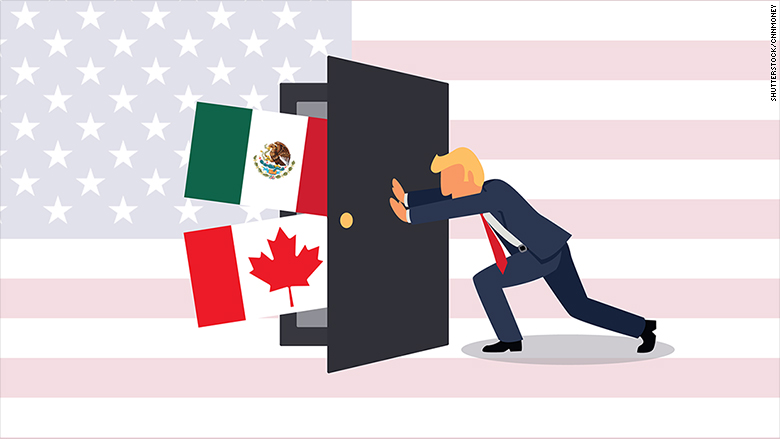
All signs indicate that Justin Trudeau’s government has painted itself into a corner with its renegotiation strategy for the North American Free Trade Agreement, concluded in 1994 among the U.S., Mexico and Canada.
At the beginning, the Canadian prime minister traveled to Mexico and apparently concluded a deal with the Mexican president such that any final agreement would involve all three countries. This was to prevent Donald Trump’s government from asserting a dominant role and separately concluding bilateral negotiations with each of the other two countries.
With the announcement on Monday, Aug. 27, however, it seems clear that Trump’s “divide and conquer” strategy has prevailed and that Mexico has effectively dropped Canada in order to conclude a separate agreement with the United States. In this agreement, Mexico made significant concessions to the U.S. concerning trade in medicines and intellectual property, in addition to accepting quotas imposed on its steel and aluminum exports to the United States.
As if that was not enough, the Canadian government and its negotiating team, led by Chrystia Freeland, after five weeks of absence from U.S.-Mexico negotiations and no trilateral negotiations since May, now face a proposal from the United States that is nothing more and nothing less than a “take it or leave it” proposition, and do so in the space of only a few days. If they do not act, the Trump government will impose tariffs on cars assembled in Canada and exported to the United States.
Thus, Trump’s bluff, that he will tear up the deal if he doesn’t get what he wants, may have worked. Indeed, from the start of the NAFTA renewal negotiations, in August 2017, the American strategy has been clear: threaten to terminate the accord; make demands that are ridiculous or politically unacceptable for Canada, like renegotiating the trade agreement every five years; or abolishing the Canadian supply management system for certain agricultural products. All in order to definitively demand the things Trump’s government has always wanted first and foremost — the abolition of the bilateral arbitration system (chapter 19), which permits Canada to challenge unilateral American anti-dumping and industrial anti-subsidy measures, and the reinforcement of the United States’ dominant position in the fields of medicines and intellectual property.
A Central Requirement
I recall that the Canadian negotiator of the original agreement, Simon Reisman, stated that, without the establishment of binational arbitration panels to avoid discriminatory and unilateral trade barriers, such an agreement was not worth more than a full spittoon.
However, the agreement that the U.S. and Mexican governments have just concluded in all likelihood drops this central requirement from Canada.
It must be said that in 1988 with the Free Trade Agreement and in 1994 with NAFTA, Canada made enormous concessions to the United States by practically agreeing to exempt takeovers and U.S. investment in Canada from review based on Canadian industrial policy needs. This is what chapter 11 of NAFTA says.
Indeed, under this crucial chapter, U.S. companies can take legal action against the Canadian government and seek redress if they feel aggrieved by Canadian provincial or federal policies and regulations. However, Canada has been much more likely than Mexico or the U.S. to be the target of corporate prosecutions under chapter 11. It is estimated that the amount of damages paid to companies under chapter 11 has so far cost up to $314 million in Canada.
One would have thought the Canadian negotiators would have told the Americans that if they wanted to abolish chapter 19’s provisions, they should also abolish those of chapter 11.
Instead, the Trudeau government’s counterproposals are focused more on new rules to be included in a new agreement with respect to environmental protection, labor laws, gender equality and Native American/First Nations rights, all of which are difficult measures to enforce, if they are ever adopted.
The Canadian government is currently in a very weak position when facing Trump’s government. It can no longer easily question provisions that it does not like in the bilateral Mexico-U.S. agreement. Its options are severely curtailed, meaning that it could make concessions substantially contrary to Canada’s interests, or it could refuse to endorse an agreement that it is otherwise pressured to approve. In both cases, the costs for Canada will be high.

Leave a Reply
You must be logged in to post a comment.